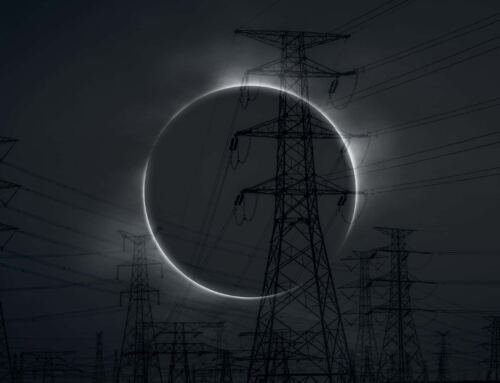footage provided by KXAN
Solar Jobs and Work Safety
The solar industry has grown rapidly over recent years, and the recent passage of the Inflation Reduction Act (IRA) will continue to bolster the industry to new heights.
SOLAR WORKFORCE GROWTH
New investments in clean energy are projected to create hundreds of thousands of quality jobs and business opportunities for Americans all across the country. Many of these jobs include solar design, installation, and maintenance, but will further be expanded by the IRA to include manufacturing opportunities as domestic production of solar components grows. Increasing America’s clean energy manufacturing capacity will reduce shipping and import costs while insulating the industry from global supply chain disruption and helping to secure the safety and reliability of the electric grid. Estimates show that the domestic production incentives will create 40,000 direct solar manufacturing jobs by the end of the decade, more than doubling today’s workforce.
The solar industry set a goal to account for 30% of all U.S. electricity generation by 2030, and the historic IRA will be a leading reason that this target is reached. However, to achieve this goal, the solar workforce itself must first be expanded in order to have enough hands capable of building residential, commercial, and industrial solar projects.
SALARY AND STABILITY
Jobs in the solar industry are well-paying and will remain stable alongside the industry’s continued growth. The average salary for solar energy jobs in the U.S. is $110,744 as of August 29th, 2022, but the salary range typically falls between $93,594 and $126,657. Salary ranges can vary widely depending on a number of factors including education, certifications, additional skills, and experience.
SAFETY IN THE WORKPLACE
Like many construction jobs, solar installation and maintenance can present a number of hazards for workers. Four significant hazards exist, including lifting, trips and falls, electrical, and ladders.
Lifting panels can be challenging due to their weight and awkward size. Improperly lifting panels can cause strains, muscle pulls, and potentially serious back injuries. Technicians must take care to avoid injury by using carts, forklifts, or other non-manual forms of lifting, using gloves to improve grip, keeping the load as close to the body as possible, and avoiding twisting the body while carrying panels.
Trips and falls are serious hazards as they can cause severe injury or even death. For this reason, any worker that is six feet or more above a lower level must have some form of protection. This can come in different forms such as guards around edges, covers over holes, safety nets, or personal fall arrest systems (harnesses). To avoid falling over edges, workers must identify all potential slip, trip, and fall hazards before starting, keep work areas clear of debris and obstructions, and ensure that work surfaces are free from ice, oil, water, and other substances.
Electrical hazards are also ever-present when working on solar systems and come from two sources: the utility company and the solar array itself. Even when the building’s main breaker is shut off, the solar system will continue producing power. Risks here include thermal burns, muscle, nerve, and tissue damage, falls from surprise shock, and potentially death. To avoid these risks, it’s crucial that workers inspect equipment to ensure it’s in safe working condition, work at safe distances from power lines, cover panels with opaque sheets to “turn off” the sun’s light, test circuits to ensure they are de-energized before working on them, never disconnect any equipment that’s under load, and wear appropriate personal protective equipment for electrical safety.
Ladders are the last major hazard that solar installers and technicians must consider. Falls from ladders can cause injuries ranging from mild to severe, and may be fatal. To avoid injury, workers must first inspect ladders closely to make sure they are safe for use, use fiberglass ladders with non-conductive side rails near power sources, place the ladder on dry, level ground, and always maintain three points of contact when climbing the ladder.
BRINGING SOLAR EDUCATION TO SCHOOLS
In order to keep up with demand for more workers in the solar industry, NATiVE has partnered with several schools including Del Valle Opportunity Center in Austin and Bryan CTE Complex in Bryan, Texas to create solar apprenticeship programs for their students. The skills and certifications earned from these programs enable students to enter the solar workforce directly out of high school, leading to well-paying jobs and major room for advancement. Programs like these can help bolster the workforce from the bottom up and help America achieve its clean energy goals.
LOOKING FOR YOUR NEW CAREER OR ADVANCEMENT?
Are you looking to become an entry-level solar technician or installer? What about a solar designer? NATiVE is currently hiring for these positions and more. Visit our careers page for additional information and to apply.
#TakeYourPowerBack

































Leave A Comment